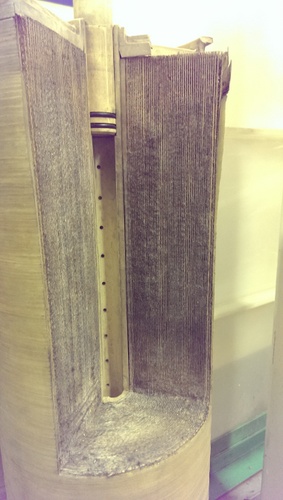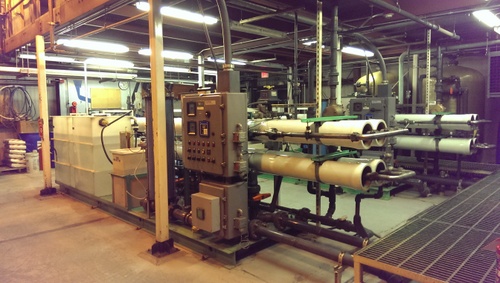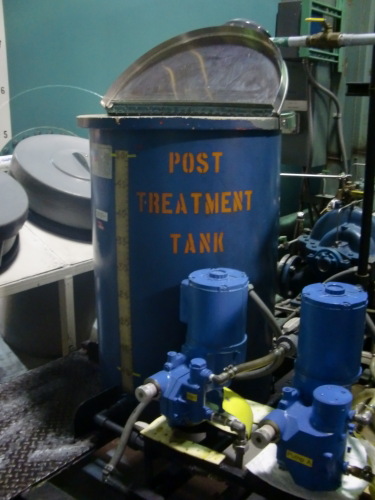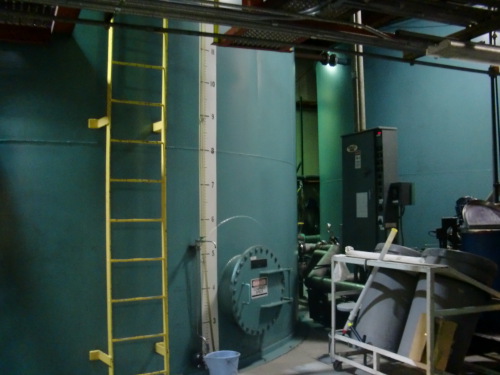
This journal is brought to you by…
- Ms. Catina Robert’s 3rd grade class at Hawkins Mill Elementary
- Nicole Taschner from West Virginia
Crosswind Elementary Students:
- Jordan Kamerzink
- Samuel Derieg in the 2nd grade
Meet McMurdo: Desalination Plant
Have you ever wondered where all of the water you use comes from? Here in McMurdo, just like back home in Memphis, I turn on my tap and water comes out. Easy, right?
But how does that water actually get to the tap? We’re lucky in Memphis, because all of our water comes from naturally occurring underground aquifers. Memphis water is some of the best in the world!
Here in McMurdo, I’m surrounded by water, but all of this water is either frozen or too salty to drink! So I wondered, how do we get water to drink, bathe and brush our teeth?
Do they simply melt the ice or does it come from somewhere else?

Let’s investigate!
Antarctica is the driest continent on Earth; it’s technically a desert. All of McMurdo’s water for drinking, bathing, and brushing our teeth comes from the ocean. That’s right! Water is pumped from the ocean to the Water Treatment Plant. But we can’t drink that water – it’s too salty! Do you know what would happen if we drank straight sea water? Humans have salt in their bodies, but water from the ocean is three times saltier than our blood. Drinking sea water will just make you thirstier, and it can be harmful to our body.
How, then, do you turn salt water into fresh water? I was on a mission to find out. So I decided to take a tour of the Water Treatment Plant.
How it works
It’s called desalination, which simply means taking salt out of sea water. But what I found out was that the process itself is not very simple! The Water Treatment staff was kind enough to explain it to me. Here’s how it’s done:
First, the water has to be heated from 28 degrees Fahrenheit to 37 degrees. Do you know why? I’ll give you a hint – at what temperature does water freeze? If you took the salt out of 28-degree water, it would freeze! So, it has to be heated up a bit to keep it liquid.
The water is then passed through a sand filter. This gets all of the solids out of the water.
Here is where it gets tricky. Have you ever heard of osmosis? Osmosis is when water in a solution moves from an area of low concentration to an area of high concentration. So, let’s say I had two liquids separated by a membrane – one is salt water (high salt concentration) and one is fresh water (low salt concentration). In natural osmosis, the water would flow from the fresh water side to the salt water side, diluting the salt water. It would continue to flow until the salt concentrations were equal. But this is the opposite of what we need! That’s why at the desalination plant they use reverse osmosis instead!
In reverse osmosis, water is pushed through filters containing membranes. These membranes have tiny holes in them, so tiny you can’t even see them! Over 700 pounds of pressure per square inch is applied to the water. The pressure pushes the water through the tiny holes in the membranes. What do you think stays behind? Yes, the salt! Only fresh water can pass through the membranes. The holes in the membranes are too small for salt to pass through. So, the salt gets left behind and the clean water passes through the filter.


Pretty neat process, don’t you think?

It’s not a totally perfect system. Some water does get left behind with the salt! But that super salty water (called brine) gets mixed with cleaned water from the Waste Water Treatment Center (this center cleans the water from our sinks, drains and toilets) and will be released into the ocean.

The additives
Now that the salt has been removed, the water is almost ready for use. A few things have to be added first. Chlorine is added to disinfect the water. You know chlorine; it’s used in swimming pools. It’s also in our drinking water. In McMurdo, much less chlorine is added than in the U.S. The waters in McMurdo are much cleaner than the drinking water back home.
To make the water taste better and to make it healthier, calcium carbonate is added.
Finally, soda ash is added to the water to achieve the right pH.

Gulp! Now it’s ready to drink!
Pros and cons of desalination
The water plant at McMurdo makes around 55,000 gallons of clean water a day. That’s a lot of water! However, it takes a lot of energy to produce this water, so we all make an effort to limit our showers and laundry.

I was amazed by the whole process! Other parts of the world use desalination to get drinking water. Parts of California and Florida are beginning to explore the possibilities of desalination, and many countries in the Middle East rely heavily on desalination to provide drinking water.
Can you think of some of the benefits of desalination? What are some possible downsides to desalination? What problems could desalination help solve?


Comments